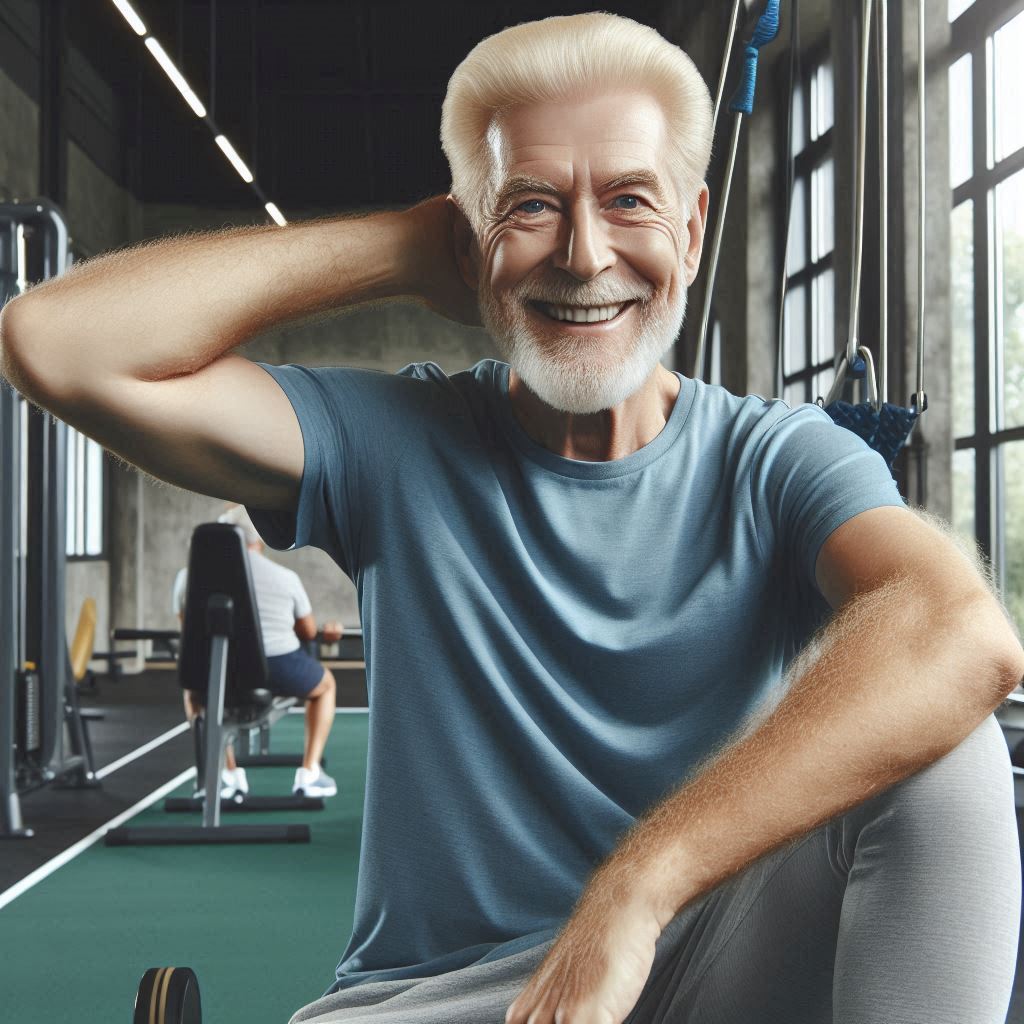
The benefits of being physically fit are so numerous that it makes no sense not to attempt to develop a reasonable level of fitness. As we age, keeping fit can become more of a challenge, but the benefits are even more numerous and rewarding. Here are six keys that seniors should keep in mind as they are pursuing a fitness program:
1. Frequency – How often you exercise is an important factor in a successful fitness program. For someone pursuing health related fitness rather than sports specific fitness, you don’t have to exercise all that often. The American College of Sports Medicine (ACSM) says that excellent results can be achieved by seniors with 2 sessions per week of strength training and at least 3 days a week of aerobic exercise (walking, etc.).
2. Intensity – How hard you push yourself is also important. Seniors looking for health related fitness don’t have to push too hard though. For aerobic exercise you should aim to work at a heart rate of about 60 -70% of your target heart rate (220 minus your age). Strength training requires enough weight to challenge your muscles, but not so much that it makes you really uncomfortable. The “no pain, no gain” mentality is definitely not necessary for good results.
3. Duration – This refers to how long your exercise session lasts. For good health, the requirements are very reasonable. A good target for aerobic exercise is 30 minutes per day. But, sessions of as little as 10 minutes each (if you do 3 per day) have been found to create good results. For strength training, duration is not too important. It’s more important that you make sure you do a variety of exercises that target all of your major muscle groups.
4. Stretching – As we get older, most of us lose some of the flexibility in our joints. Regaining as much of this flexibility as we can is extremely beneficial. I recommend to my clients that they try to do some stretching exercises every day. Even a few minutes a day can make a big difference.
5. Warm-up – Everyone should include at least a few minutes of warm-ups before they start their regular exercises. Your goal with a warm-up is to simply loosen up the muscles you’re about to use and get some extra blood flowing to them. For strength training a warm-up might include a set of your exercises with little or no weight. For aerobic exercise, doing the exercise at a slower rate at the beginning works well. A warm-up before stretching is also a good idea. A few calisthenics that gently move the joints you’re going to stretch is all that’s needed.
6. Cool Down – This is overlooked by many people. The principle is pretty much the opposite of a warm-up. When you are through exercising and increasing your heart rate and the blood flow to your muscles, you need to slow everything down again. Make sure you do some movements to slowly bring your body back down to a more normal level before you stop completely.
Using these keys will help you to develop an exercise program that is both beneficial and easy for you to follow. The results that you will start to feel in just a few short months will make the effort well worth it. Keep in mind that an exercise program to improve your health is something you must plan on doing the rest of your life. And you are worth it.
Online fitness coach Tom Manfredi is the creator of the site “fitness-after-50”. He has a master’s degree in exercise physiology and over 20 years of practical exercise experience.
This site is designed with the mature adult in mind. There is a lot of information available on the site for anyone looking to start or restart a sensible exercise program. Learn more by going to fitness-after-50.com [http://www.fitness-after-50.com/]




